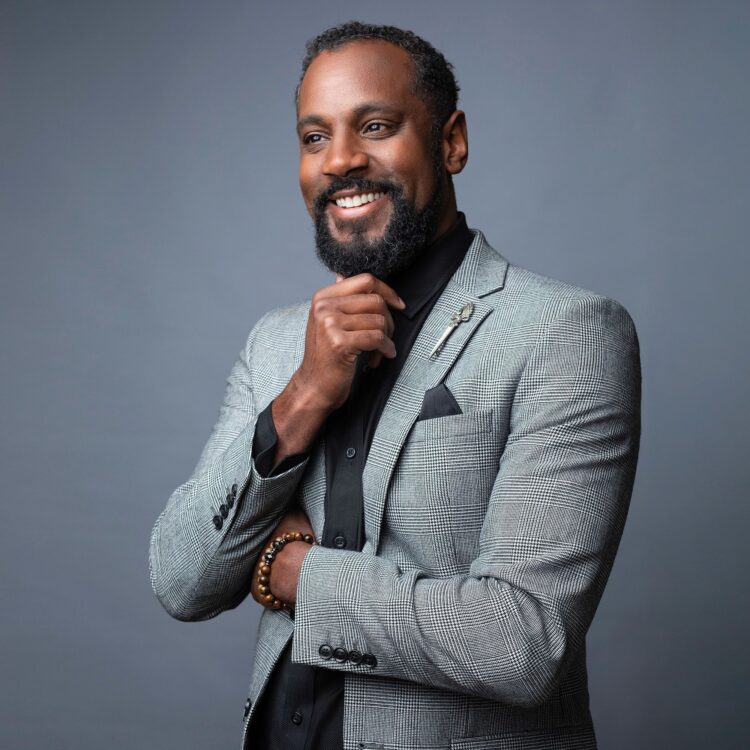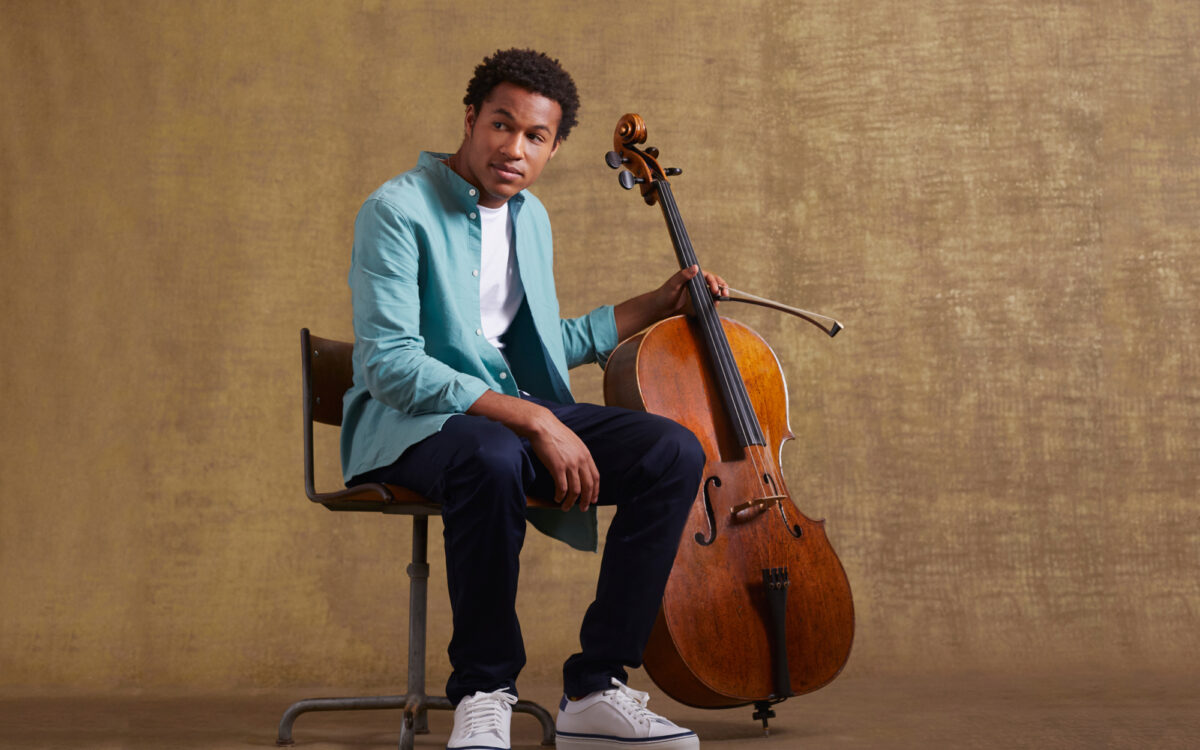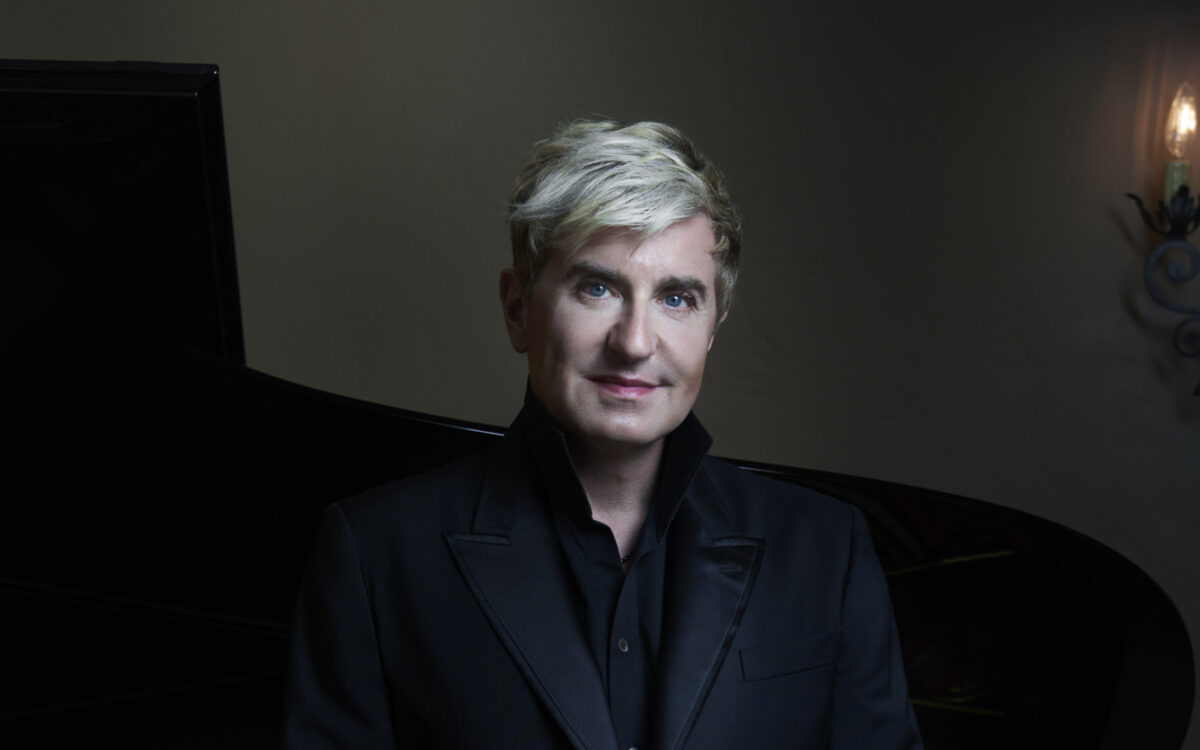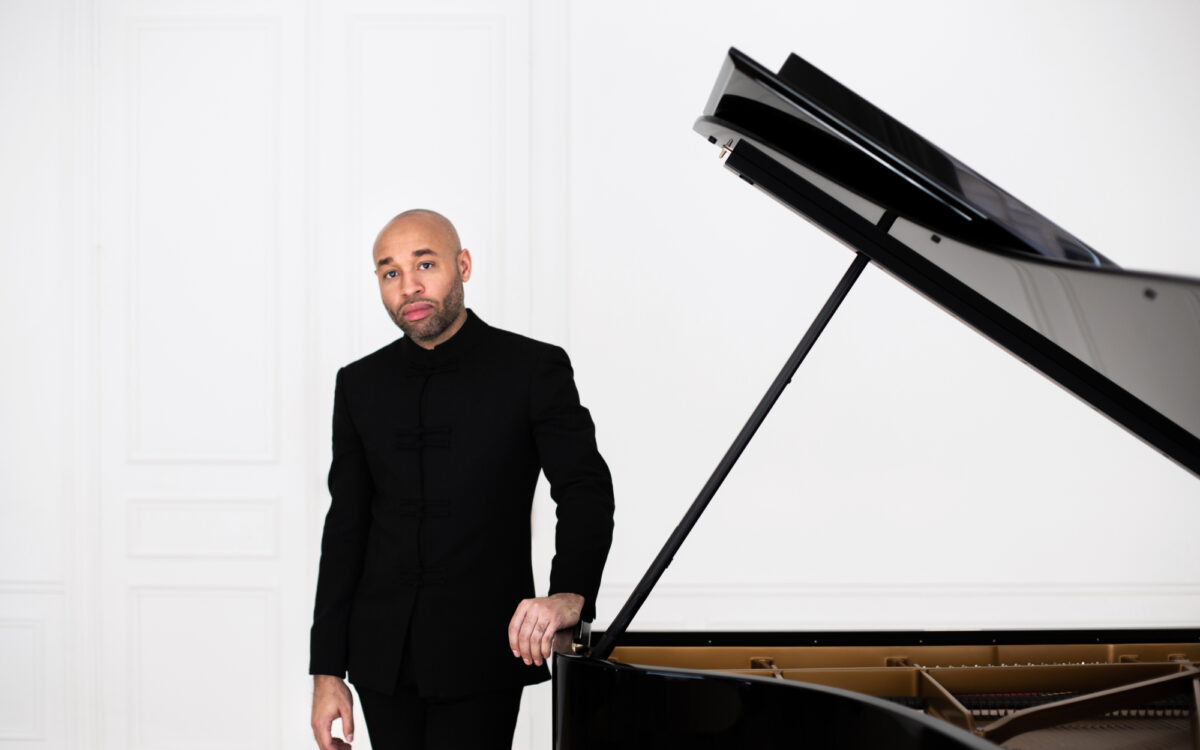Four Black American Dances
Carlos Simon was born April 13, 1986, in Washington, D.C., and lives there, though he grew up in Atlanta, Georgia. Composed in 2022, Four Black American Dances was commissioned by the Boston Symphony Orchestra, Andris Nelsons, Music Director, through the generous support of the New Works Fund established by the Massachusetts Cultural Council, a state agency.
The score of Four Black American Dances calls for piccolo, 2 flutes, 2 oboes, 2 clarinets, 2 bassoons, 4 horns, 2 trumpets, 2 trombones and bass trombone, tuba, timpani, percussion (xylophone, vibraphone, marimba, tubular bells, cymbals, suspended cymbal, splash cymbal, tam-tam, tambourine, triangle, wood blocks, shaker, 2 whips, large wood stick on a wooden floorboard, tom-toms, 2 snare drums, bass drum, hand claps), harp, and strings (first and second violins, violas, cellos, and double basses). The piece is about 14 minutes long.
Much of Carlos Simon’s recent practice in his music has involved deep engagement with Black musical traditions through the lens of contemporary classical concert music. In this, he seems deliberately to have taken on the mantle of such early 20th-century composers as William Grant Still and Florence Price, who incorporated Black Spirituals, dance music, and the blues into their own sophisticated musical languages. Fully aware of the continuum of history, he is a musical activist who advocates strongly for musicians of color in the classical sphere.
Simon’s own direct musical influences are myriad: the gospel music and hymns of his father’s church, radio-play pop music, the classical canon, and, significantly, film music composers including John Williams. Simon was born in Washington, D.C., but grew up in Atlanta, where his father was a pastor. He began learning piano at his parents’ urging to provide music for services. Black gospel music was the core of his musical experience as a child, and he soon began to compose his own songs of worship. He learned music initially by ear, a performance- and listening-based practice that has informed his musical life ever since, but he fundamentally approaches music through the lens of composing: “The way I think about things, I’m a composer first.” Currently composer in residence of the Kennedy Center in Washington, he was music director and keyboardist for Broadway star Jennifer Holliday (including performances with the Boston Pops and Keith Lockhart) and has toured with the singer and hip-hop pioneer Angela Stone. Simon was a Fellow of the Sundance Institute in 2018. In 2020 he became an assistant professor at Georgetown University in Washington, D.C., where his courses include music theory and the study of sound and music for film.
Carlos’s introduction to classical music came through film and through his grandmother’s enthusiasm; when he was about 10 she bought him a “masterpieces of classical music” CD, which included the Allegretto movement of Beethoven’s Seventh Symphony. By high school Simon took for granted he would be a classical pianist and composer. Simon also experimented with the available means of making electronic music and sounds via computer.
Simon attended Georgia State University and Morehouse College, studying piano and composition. He earned his doctorate in music composition from the University of Michigan, where his teachers included Michael Daugherty and Evan Chambers. In graduate school, a mentor suggested he deliberately reconsider his relationship to gospel music, so he spent time immersed in Western European and other musical styles. He feels that that gospel foundation remains ever-present in his music, whether or not it’s explicitly audible.
Simon’s work is performed frequently through the U.S. He has written for such organizations as Washington National Opera, the Reno Philharmonic, American Composers Orchestra, the University of Michigan Symphony Band, and many others. He received the Sphinx Medal of Excellence, a prestigious honor from the Sphinx Organization, which nurtures and develops the careers of Black and Latino classical musicians. Perhaps the best introduction to Simon’s wide-ranging approach to music is his multifaceted 2018 concept album My Ancestor’s Gift, which blends his pop, gospel, classical, and experimental experiences into a rich musical narrative. More recently, his Requiem for the Enslaved was released by Decca in July 2022. That powerful piece was commissioned by Georgetown University to acknowledge the institution and its founders’ roles in the slave trade in the U.S.
The Boston Symphony Orchestra and Andris Nelsons performed Simon’s Fate Now Conquers in the 2020-21 season and at Tanglewood in 2021 and performed Motherboxx Connection at Tanglewood in July 2022 and at the start of the 2022-2023 season.
Four Black American Dances, as the composer relates, recontextualizes dances from specific Black American traditions and, like Florence Price’s Juba Dance movements—or for that matter the Czech composer Antonín Dvořák’s Slavonic Dances—reinvents them for the orchestral medium. Simon infuses his orchestra with modern, cinematic colors as well as direct sonic approximations of dance sounds—such as the wooden pole he mentions in his own comments below.
Robert Kirzinger
Composer and writer Robert Kirzinger is the Boston Symphony Orchestra’s Director of Program Publications
Composer Carlos Simon on his Four Black American Dances
Dance has always been a part of any culture. Particularly in Black American communities, dance is and has been the fabric of social gatherings. There have been hundreds, perhaps thousands of dances created over the span of American history that have originated from the social climate of American slavery, Reconstruction and Jim Crow. This piece is an orchestral study of the music that is associated with the Ring Shout, the Waltz, Tap Dance, and the Holy Dance. All of these dances are but a mere representation of the wide range of cultural and social differences within the Black American communities.
I. Ring Shout
A ring shout is an ecstatic, transcendent religious ritual, first practiced by enslaved Africans in the West Indies and the United States, in which worshipers move in a circle while shuffling and stomping their feet and clapping their hands. To evoke the celebratory nature of this dance, I have asked the percussionist to use a large stick on a wooden floor board paired with fast moving passages in the strings and woodwinds.
II. Waltz
Cotillion balls existed for “upper-class” families as they allowed aristocratic families to vie for better marriage prospects for their daughters. However, cotillion balls were segregated and expensive, and did not include Black Americans. Debutante balls finally appeared in Black social circles during the 1930s, in large part due to the efforts of Black sororities, fraternities, and the growing number of affluent Black Americans. The waltz was the dance of choice in these environments.
III. Tap!
Tap dance is a form of dance characterized by using the sounds of tap shoes striking the floor as a form of percussion. For this movement, I have emulated the sound of the tap with the side rim of the snare drum in the percussion section. The strings play in a very short, disconnected style alongside the brass drawing on jazz harmonies.
IV. Holy Dance
Protestant Christian denominations, such as the Church of God in Christ (C.O.G.I.C.), Pentecostal Assemblies of God, Apostolic, Holiness Church, among many others, are known for their exuberant outward expressions of worship. The worship services in these churches will often have joyous dancing, spontaneous shouting, and soulful singing. The music in these worship services is a vital vehicle in fostering a genuine spiritual experience for the congregation. This movement calls on the vibrant, celebratory character that still exist in many churches today. I have composed music that mimics the sound of a congregation “speaking in tongues” (murmuring in a unknown spiritual language) by asking the orchestra to play in a semi-improvised manner. Often referred to as a “praise break,” the music propels forward continuously with the trombone section at the helm. The section moves to a climactic ending with the plagal “Amen” cadence.
Carlos Simon




